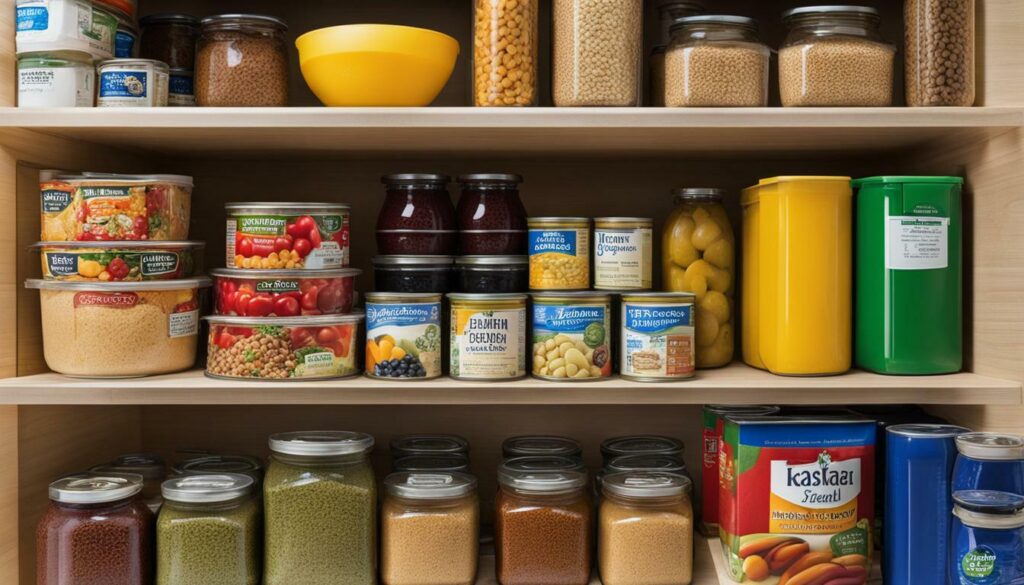
When preparing for emergencies, having a well-stocked supply of survival food is crucial for your safety and well-being. It is important to be prepared with reliable food supplies that can sustain you during any crisis. Whether it’s a short-term emergency or an extended period without access to fresh food, having the right survival food can make all the difference.
Key Takeaways:
- Short-term survival foods include canned fruits and vegetables, boxed soups and broths, dried grains and legumes, and boxed and instant meals.
- For long-term emergencies, consider freeze-dried and dehydrated foods as they have a long shelf life and provide high nutrients.
- Healthy survival food options to stockpile include peanut butter, trail mix, nuts, vitamins, freeze-dried fruits, and canned fruits and vegetables.
- Essential staples for survival include whole-grain crackers and cereals, pasteurized and powdered milk, baby food and formula, and energy bars and sports drinks.
- Consider factors such as shelf life, ease of preparation, nutritional value, and proper storage methods when selecting survival food.
When building your survival food stockpile, don’t forget to include additional items like distilled water, canned liquids, dehydrated powdered milk, whey and eggs, hard cheeses encased in wax, protein bars and drinks, canned and dehydrated meats, drink mixes, and oils like butter, lard, olive oil, and organic shortening.
Remember, being prepared with a diverse range of survival foods will ensure you stay nourished and ready to face any emergency situation that comes your way.
Short-Term Survival Foods for Emergencies
Short-term emergencies require foods that are easy to prepare and have a decent shelf life, such as canned fruits and vegetables, boxed soups and broths, dried grains and legumes, and boxed and instant meals. These foods are essential for maintaining sustenance during a crisis and can provide you with the necessary nutrients to stay nourished. Canned fruits and vegetables are a great source of vitamins and minerals, while boxed soups and broths offer a quick and easy way to get a warm and comforting meal. Dried grains and legumes, such as rice, beans, and lentils, are versatile and can be used in various recipes, while boxed and instant meals provide a convenient solution when time is of the essence.
When stocking up on short-term survival foods, it’s important to consider the shelf life of these items. Canned fruits and vegetables, for example, can last for several years when stored properly. Likewise, boxed soups and broths can have a shelf life of one to two years. Dried grains and legumes, if stored in a cool, dry place, can last up to several years as well. Boxed and instant meals often have a shorter shelf life, typically ranging from six months to one year. It’s crucial to rotate your stock regularly and check expiration dates to ensure that you always have fresh and safe food available.
| Short-Term Survival Foods | Shelf Life |
|---|---|
| Canned fruits and vegetables | Several years |
| Boxed soups and broths | 1-2 years |
| Dried grains and legumes | Several years |
| Boxed and instant meals | 6 months to 1 year |
Stocking up on these short-term survival foods ensures that you have a variety of options to choose from during emergencies. They provide convenience, nutrition, and peace of mind, allowing you to focus on other important aspects of survival. Remember to store these items in a cool, dry place, away from direct sunlight, to maximize their shelf life and maintain their quality.
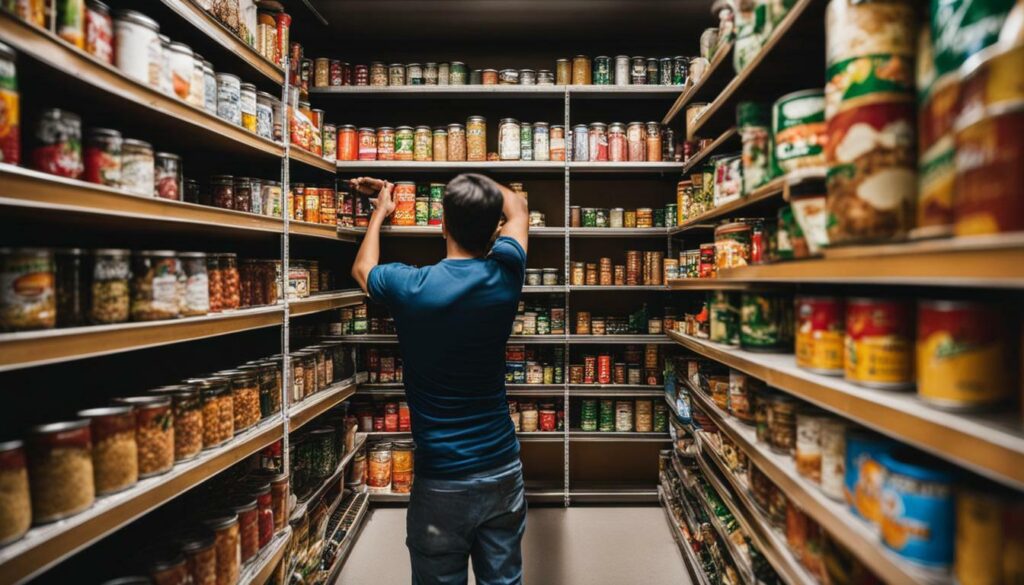
Long-Term Survival Foods for Extended Emergencies
For long-term emergencies, it is essential to have foods with a longer shelf life, such as freeze-dried and dehydrated foods, non-perishable foods, and other survival food essentials. These types of foods are designed to last for extended periods without spoiling, ensuring you have a reliable source of sustenance during prolonged crises.
Freeze-dried food is an excellent option for long-term survival as it retains its flavor, texture, and nutritional value while having an extended shelf life. This process involves removing the moisture from the food, making it lightweight and easy to store. Whether it’s freeze-dried fruits, vegetables, or even complete meals, they offer convenience and nutrition when needed the most.
Dehydrated food is another suitable choice for long-term emergencies. By removing the water content, dehydrated food becomes lightweight, making it ideal for storage. It retains most of its nutritional value, allowing you to get the necessary nutrients while ensuring you have a variety of food options available.
| Survival Food Essentials | Shelf Life | Nutritional Value |
|---|---|---|
| Freeze-dried fruits and vegetables | Up to 25 years | Rich in vitamins and minerals |
| Dehydrated meats and poultry | Up to 15 years | High in protein and essential nutrients |
| Canned goods | Up to 5 years | Provide essential food groups |
| Non-perishable foods (e.g., rice, beans) | Varies (check expiration dates) | Good source of carbohydrates and protein |
Having a stockpile of long-term survival foods ensures you are prepared for any prolonged emergency. Remember to rotate your supplies regularly and check expiration dates to maintain freshness and quality. By investing in these essential food items with longer shelf lives, you can have peace of mind knowing you have a reliable source of sustenance during uncertain times.

In addition to the basic survival foods, it is important to stockpile healthy options such as peanut butter, trail mix, nuts, vitamins, freeze-dried fruits, and canned fruits and vegetables. These items provide essential nutrients and can help keep you nourished during emergencies.
Peanut butter is a versatile and nutritious option to have in your survival food stockpile. It is high in protein, healthy fats, and essential vitamins and minerals. Plus, it has a long shelf life, making it a reliable choice for long-term emergencies. Spread it on crackers or bread for a quick and filling snack.
Trail mix is another excellent choice for a healthy survival food option. It typically contains a mix of nuts, dried fruits, and sometimes chocolate or seeds. Packed with protein, fiber, and energy, trail mix is a convenient and satisfying snack that can keep you fueled during uncertain times.
Don’t forget to include a variety of nuts in your stockpile. Nuts are nutrient-dense and provide a good source of healthy fats, protein, fiber, and essential vitamins and minerals. They are also versatile and can be eaten as a snack or added to meals for added crunch and flavor.
Table: Nutritional Information of Select Freeze-Dried Fruits
| Fruit | Calories (per serving) | Protein (g) | Fiber (g) | Vitamin C (mg) |
|---|---|---|---|---|
| Strawberries | 50 | 1 | 2 | 8 |
| Blueberries | 80 | 1 | 4 | 15 |
| Mango | 90 | 1 | 3 | 60 |
For added vitamins and a burst of flavor, freeze-dried fruits are an excellent addition to your survival food supplies. They retain most of their nutrients and have a long shelf life. Enjoy them as a standalone snack or rehydrate and add to your meals for a touch of sweetness and nutrition.
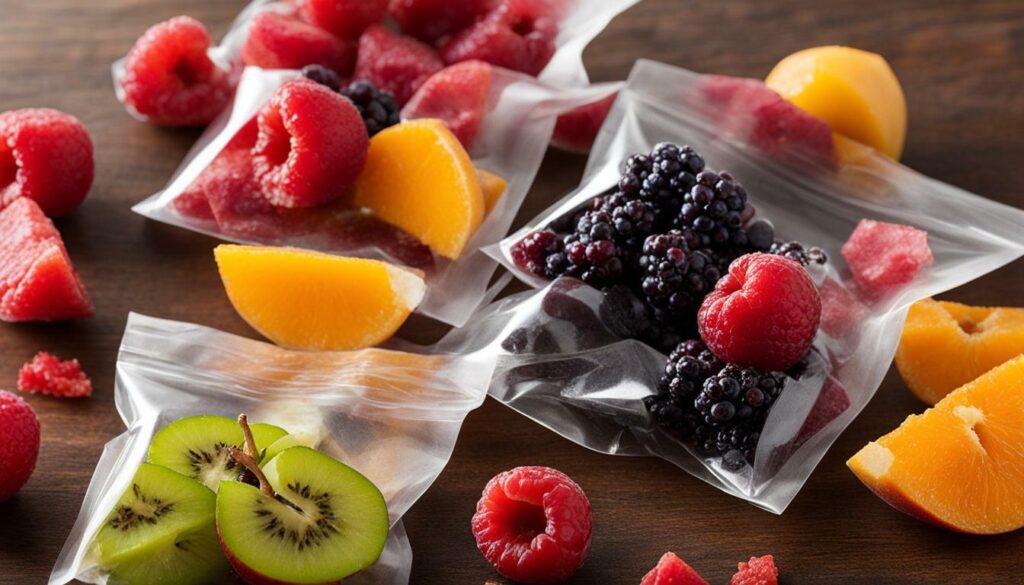
Canned fruits and vegetables are also important to include in your stockpile. They provide essential vitamins and minerals, offering variety and nutrition in your meals during emergencies. Choose a variety of fruits and vegetables to ensure a well-balanced diet. Just remember to check the expiration dates regularly and rotate your supply to maintain freshness.
In conclusion, when preparing for emergencies, it is crucial to stockpile a variety of healthy survival food options. Peanut butter, trail mix, nuts, vitamins, freeze-dried fruits, and canned fruits and vegetables can provide essential nutrients and contribute to your overall well-being during uncertain times. Consider your dietary needs, personal preferences, and the nutritional value of these items when building your emergency food supplies.
Essential Staples for Survival
Alongside the main survival food items, it’s important to include essential staples like whole-grain crackers and cereals, pasteurized and powdered milk, baby food and formula, as well as energy bars and sports drinks. These staples provide additional sustenance, essential nutrients, and a sense of normalcy during emergencies.
Whole-grain crackers and cereals are a great source of carbohydrates, fiber, and energy. They have a long shelf life and can be easily stored. When paired with pasteurized and powdered milk, you have a nutritious and versatile combination. Milk is high in calcium and protein, while powdered milk is convenient for long-term storage. It’s important to have baby food and formula for infants and young children, ensuring they receive the proper nutrition they need.
Energy bars and sports drinks are excellent sources of quick energy and electrolytes. They are compact, easy to carry, and provide an instant boost of energy during emergency situations. Whether you’re on the move or in need of a quick pick-me-up, these staples are essential for staying nourished and hydrated.
| Essential Staples | Benefits |
|---|---|
| Whole-grain crackers and cereals | Source of carbohydrates and fiber |
| Pasteurized and powdered milk | High in calcium and protein |
| Baby food and formula | Proper nutrition for infants and young children |
| Energy bars and sports drinks | Quick energy and electrolyte replenishment |
By including these essential staples in your survival food stockpile, you can ensure that you have a well-rounded and nutritious supply during emergencies. These items provide the necessary nutrients, energy, and comfort to help you navigate through challenging times. Remember to regularly check the expiration dates and rotate your stockpile to maintain freshness and quality.
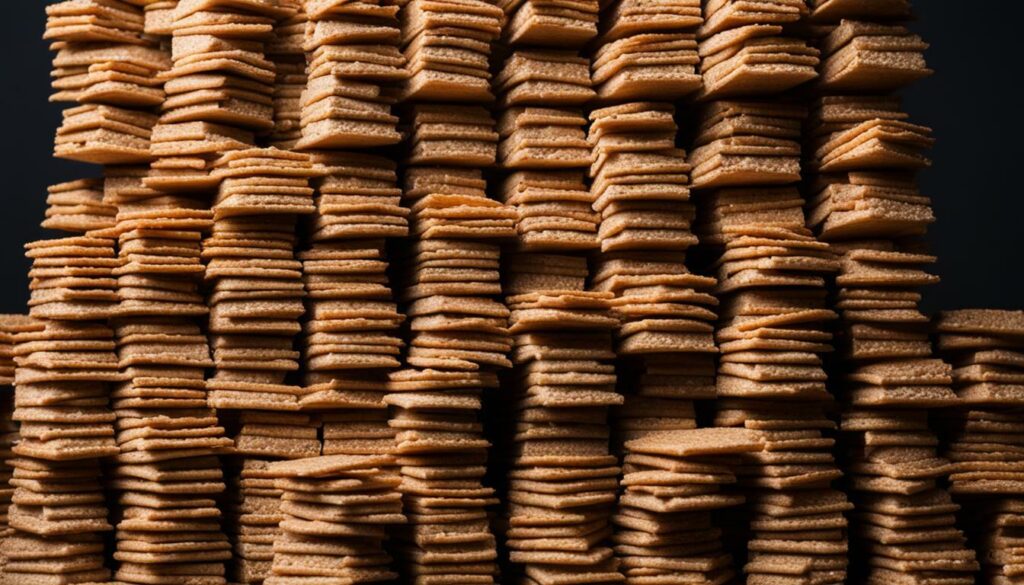
“The key to surviving and thriving during emergencies is having a well-stocked pantry of essential staples. Whole-grain crackers and cereals, pasteurized and powdered milk, baby food and formula, and energy bars and sports drinks are all vital components of a balanced survival food supply.” – Survival Expert
Considerations for Survival Food Selection
When choosing survival food, it’s crucial to consider factors such as shelf life, ease of preparation, nutritional value, and proper storage to ensure you have the best quality and longevity.
Shelf life is an important consideration as it determines how long the food can be stored without spoiling. Look for foods with a long shelf life, such as freeze-dried and dehydrated options, as they can last for years if stored properly. These foods are lightweight and compact, making them ideal for emergency situations.
Ease of preparation is another crucial factor. During emergencies, you may not have access to a fully equipped kitchen, so opt for foods that require minimal preparation. Canned foods and instant meals are convenient options as they can be eaten straight from the can or easily prepared with hot water. This ensures you can quickly and efficiently feed yourself and your family.
Nutritional value should not be compromised, even in emergency situations. Look for foods that are packed with essential nutrients such as vitamins, minerals, and protein. Peanut butter, trail mix, and canned fruits and vegetables are excellent sources of nutrition. Supplementing your diet with vitamins can also help ensure you’re getting all the necessary nutrients.
| Shelf Life | Ease of Preparation | Nutritional Value | Proper Storage |
|---|---|---|---|
| Long shelf life | Minimal preparation | Essential nutrients | Follow storage instructions |
| Freeze-dried and dehydrated foods | Canned foods and instant meals | Peanut butter, trail mix, canned fruits and vegetables | Store in a cool, dry place |
Lastly, proper storage is essential to maintain the quality and longevity of your survival food. Follow the storage instructions provided by the manufacturer, and store the food in a cool, dry place. Avoid exposure to moisture, extreme temperatures, and direct sunlight to prevent spoilage.
By considering factors such as shelf life, ease of preparation, nutritional value, and proper storage, you can ensure that your survival food supply is reliable, nourishing, and ready for any emergency.

In addition to food, it’s important to stockpile essential items like distilled water, canned liquids, dehydrated powdered milk, whey and eggs, and hard cheeses encased in wax. These items can provide additional sustenance, hydration, and versatility in your survival food stockpile.
Distilled water should be a priority, as it has an extended shelf life and can be used for drinking, cooking, and hygiene purposes. Canned liquids such as soups, broths, and juices can add flavor and variety to your meals, while providing essential hydration.
Dehydrated powdered milk is a convenient and long-lasting option for meeting your calcium and vitamin D needs during emergencies. Whey and eggs can offer a good source of protein, and when appropriately stored, they can last for an extended period.
Hard cheeses encased in wax are a great addition to your survival food stockpile due to their long shelf life and high nutritional value. They can be enjoyed as a snack on their own, or grated and added to various meals for added taste and protein content.
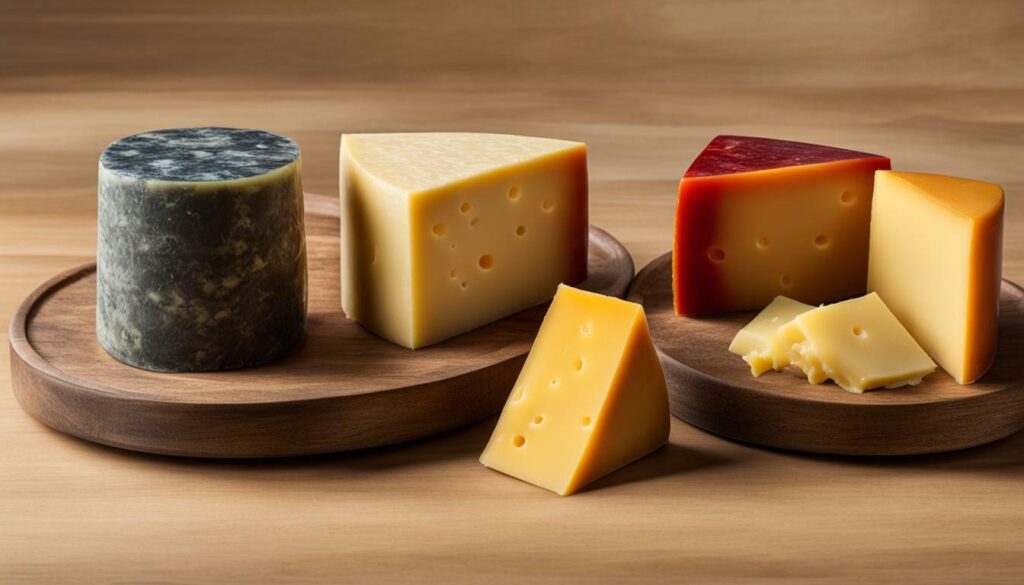
Remember that when stockpiling these items, it is crucial to follow proper storage guidelines and regularly check for expiration dates to ensure their freshness and effectiveness. By including these additional items in your emergency supplies, you can enhance your preparedness and increase your chances of staying nourished and hydrated during challenging times.
Protein Sources for Survival
To ensure you have sufficient protein during emergencies, stockpiling protein bars and drinks, as well as canned and dehydrated meats, is essential. These protein-rich options will provide you with the necessary nutrients to stay nourished and energized in challenging situations.
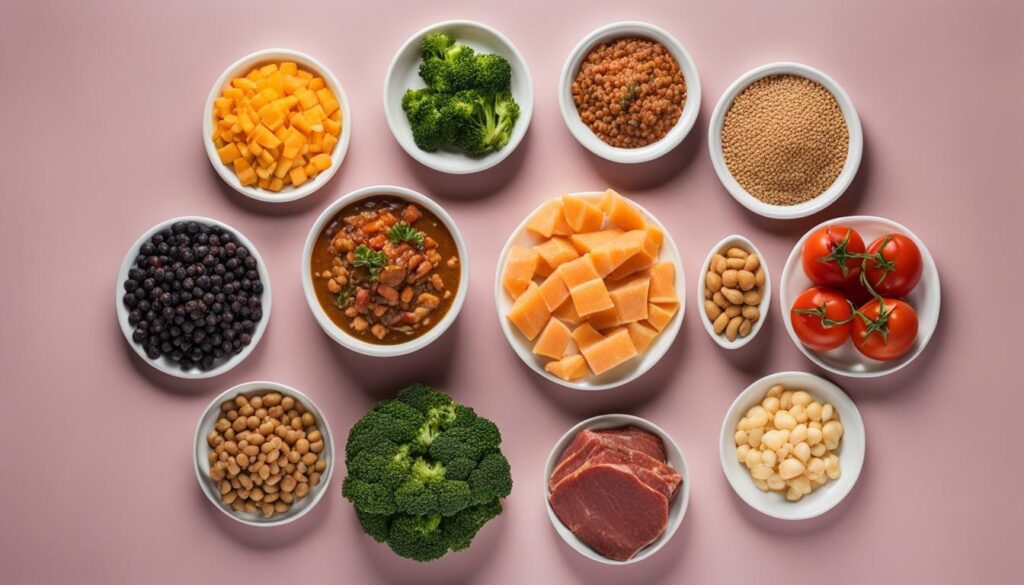
Protein bars and drinks are convenient and easy-to-store options that can be utilized during emergencies. They come in various flavors and contain high levels of protein, helping to keep you satiated. These portable snacks are great for on-the-go situations when a quick boost of energy is needed.
| Protein Bars and Drinks | Benefits |
|---|---|
| Convenient and portable | Provides quick energy |
| High protein content | Sustains satiety |
| Various flavors available | Offers variety |
Canned and dehydrated meats are excellent long-lasting protein sources for emergencies. They can be easily incorporated into various recipes or consumed on their own. These meats are packed with essential nutrients and are a great addition to any survival food stockpile.
| Canned and Dehydrated Meats | Benefits |
|---|---|
| Long shelf life | Does not require refrigeration |
| High protein content | Provides essential nutrients |
| Versatile for cooking | Can be used in various recipes |
Stay Prepared with Protein
During emergencies, having a sufficient protein intake is crucial for maintaining strength and overall well-being. Protein bars and drinks offer a quick and convenient solution, while canned and dehydrated meats provide a longer-term protein source. By including these protein-rich options in your survival food supplies, you can ensure that you have the necessary nutrients to thrive in challenging situations.
3 Day Food Supply
3 Month Food Supply
Essential Drink Mixes for Hydration
Alongside food, it’s important to have drink mixes for hydration purposes, as well as oils like butter, lard, olive oil, and organic shortening for cooking and flavoring. When it comes to drink mixes, there are various options to consider, depending on your personal preferences and needs. These mixes not only provide hydration but can also offer essential nutrients to keep you energized during emergencies.
A popular option for drink mixes is powdered electrolyte solutions. Packed with essential minerals like sodium, potassium, and magnesium, these mixes help replenish electrolytes lost during physical exertion or dehydration. Simply mix them with water, and you’ll have a refreshing and replenishing beverage.
Herbal tea bags are another great addition to your emergency food supplies. Not only do they provide hydration, but certain herbal teas also offer medicinal benefits. For example, chamomile tea can help with relaxation and sleep, while peppermint tea aids digestion. Plus, enjoying a warm cup of herbal tea can be comforting during stressful times.
| Drink Mixes | Benefits |
|---|---|
| Powdered electrolyte solutions | Replenish electrolytes and provide hydration |
| Herbal tea bags | Hydration and potential medicinal benefits |
When it comes to cooking and flavoring your survival meals, having a variety of oils is essential. Butter, lard, olive oil, and organic shortening can all be used for different purposes. Butter adds richness and flavor, while lard is great for frying and baking. Olive oil is a healthy option for sautéing and salad dressings, and organic shortening can be a substitute for butter in baking.
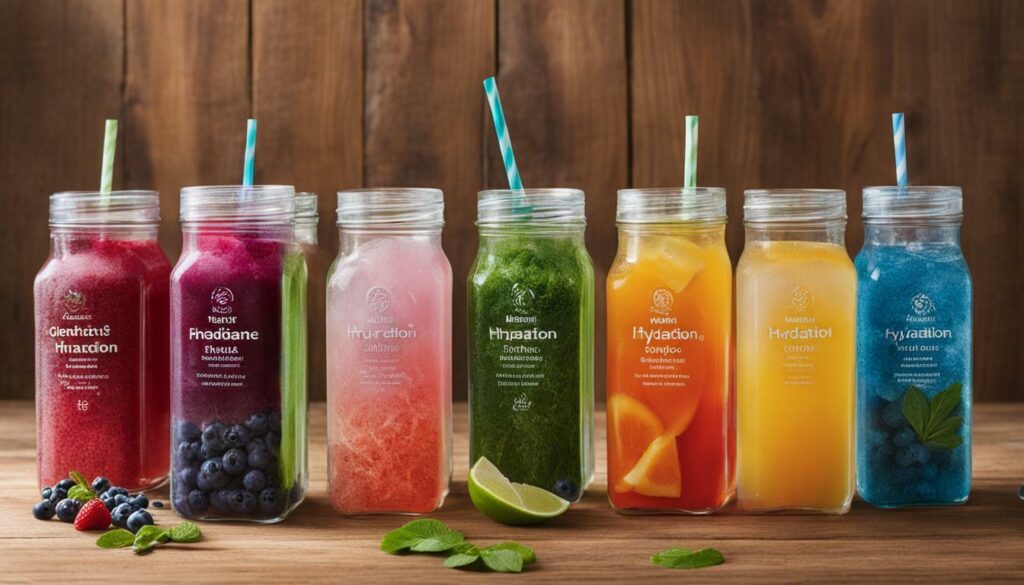
By including a selection of drink mixes and oils in your emergency food supplies, you can ensure that you have both hydration and flavor covered during challenging times. Remember to store these items properly to maintain their quality and freshness for as long as possible.
Conclusion
Having a well-planned prepper survival food list is crucial for any emergency situation, ensuring you have the necessary food supplies to sustain yourself and your loved ones. When preparing for emergencies, it is important to have a reliable source of survival food. For short-term emergencies, consider stocking up on canned fruits and vegetables, boxed soups and broths, dried grains and legumes, and boxed and instant meals. These foods have a relatively long shelf life and can provide you with essential nutrients during a crisis.
For long-term emergencies, it is recommended to include freeze-dried and dehydrated foods in your survival food stockpile. These foods have a longer shelf life and can provide you with the necessary nutrients to sustain you through a longer crisis. Additionally, consider stockpiling other healthy survival food options such as peanut butter, trail mix, nuts, vitamins, freeze-dried fruits, canned fruits and vegetables, whole-grain crackers and cereals, pasteurized and powdered milk, baby food and formula, and energy bars and sports drinks. These foods provide essential nutrients and can help keep you nourished during emergencies.
When selecting survival food, it is important to consider factors such as shelf life, ease of preparation, nutritional value, and proper storage methods. Ensure your food supplies have a long shelf life, are easy to prepare, and offer the necessary nutrients for your survival. Additionally, make sure you store them properly to maintain their quality and freshness.
In addition to food, it is also essential to stockpile other items that can provide sustenance, hydration, and versatility in your survival food stockpile. Consider hoarding items like distilled water, canned liquids, dehydrated powdered milk, whey and eggs, hard cheeses encased in wax, protein bars and drinks, canned and dehydrated meats, drink mixes, and oils like butter, lard, olive oil, and organic shortening. These items can complement your food supplies and provide you with a well-rounded emergency stockpile.
Remember, emergencies can happen at any time, and being prepared with a comprehensive prepper survival food list is essential for your safety and well-being. By taking the time to plan and stockpile the right foods and supplies, you can have peace of mind knowing that you are ready to face any emergency situation that may arise.
FAQ
What are the best short-term survival foods for emergencies?
The best short-term survival foods for emergencies include canned fruits and vegetables, boxed soups and broths, dried grains and legumes, and boxed and instant meals.
What are the recommended long-term survival foods for extended emergencies?
Recommended long-term survival foods for extended emergencies are freeze-dried and dehydrated foods, as they have a long shelf life and provide high nutrients.
What are some healthy survival food options to stockpile?
Some healthy survival food options to stockpile include peanut butter, trail mix, nuts, vitamins, freeze-dried fruits, canned fruits and vegetables, whole-grain crackers and cereals, pasteurized and powdered milk, baby food and formula, and energy bars and sports drinks.
What should I consider when selecting survival food?
When selecting survival food, you should consider factors such as shelf life, ease of preparation, nutritional value, and proper storage methods.
Are there any additional items I should hoard for emergencies?
Yes, in addition to survival food, it is recommended to hoard items such as distilled water, canned liquids, dehydrated powdered milk, whey and eggs, hard cheeses encased in wax, protein bars and drinks, canned and dehydrated meats, drink mixes, and oils like butter, lard, olive oil, and organic shortening.
